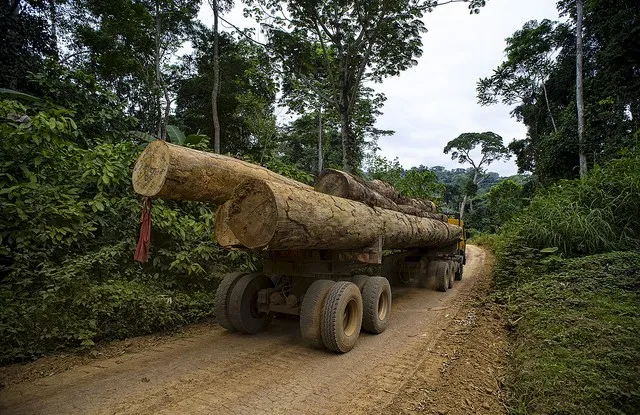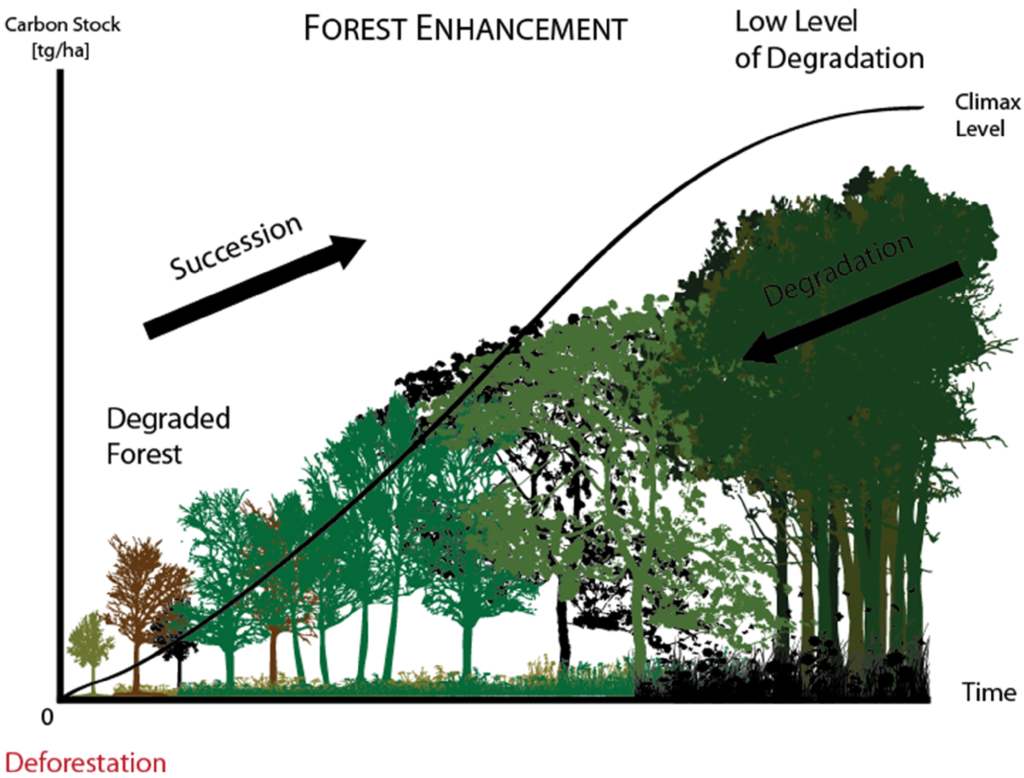
Top satellite-based observations of fall 2022
Top satellite-based observations of September and October 2022
Here’s a summary of our highlighted satellite observations from the last two months. Observations are based on Copernicus Sentinel-2 satellites’ acquisitions. Although the autumn was not as varied by sudden atmospheric changes as the summer, it is still full of many astonishing observations. Starting with September 25th we celebrated World Rivers Day. Rivers provide us with drinking water, irrigation, transportation, and much more. We should take this opportunity to discuss and focus on possible threats and dangers, such as pollution or the long-term effects of increasingly frequent droughts. Below we can see the Mississippi River – the second-longest river in the United States. It’s flowing through ten states and is the birthplace of water skiing.
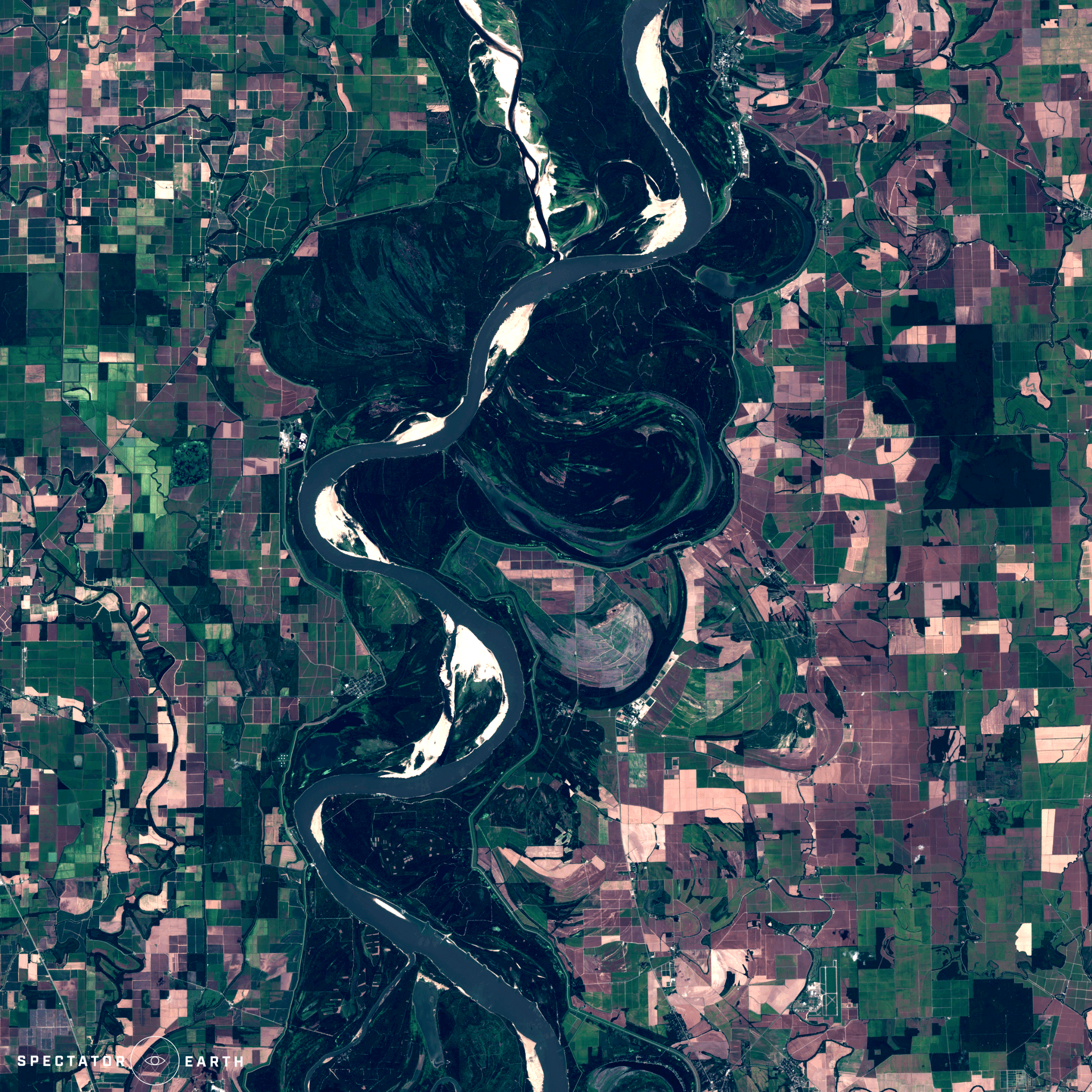
Sentinel-2 image of the Mississippi River – view on the map.
The continuation of wildfires in Autumn
With the start of the fall on September 23rd, one could expect cooler temperatures, and thus also a leveling off of occurring wildfires. Unfortunately, Autumn 2022 still hit us with devastating wildfires, including a huge one in Zhetikara District in Kazahstan and the “Cedar Creek Fire” just 15 miles east of Oakridge in Oregon. The fire was estimated to be more than 92 thousand acres. Additional fires spotted this fall so far include:
- Tecate area in Mexico
- Canto do Buriti in the state of Piauí in Brazil
- Namibia near Gam in Otjozondjupa Region
- Laguna Mar Chiquita in Rivadavia Department in Argentina
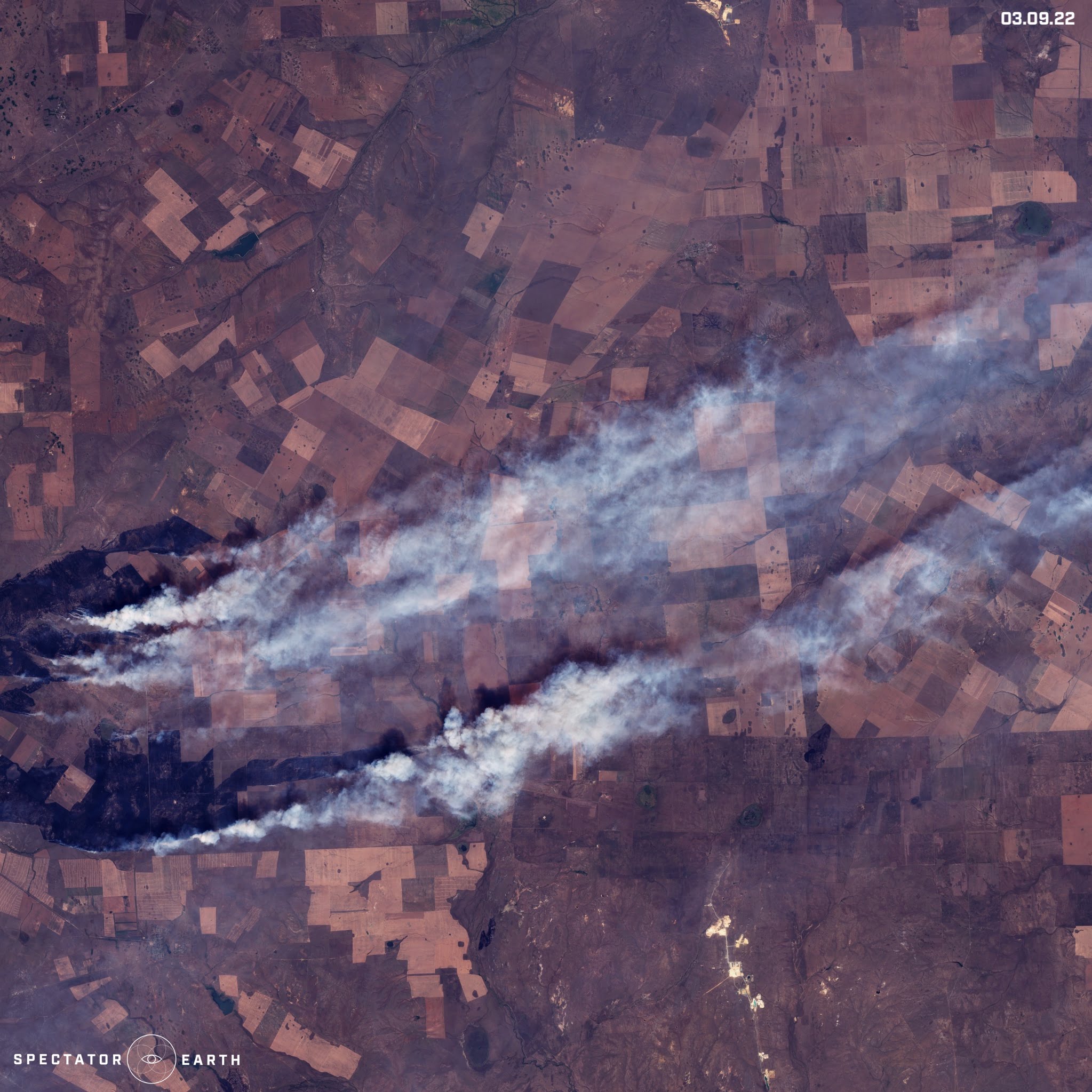
Fire in Zhetikara District in Kazakhstan – view on the map.
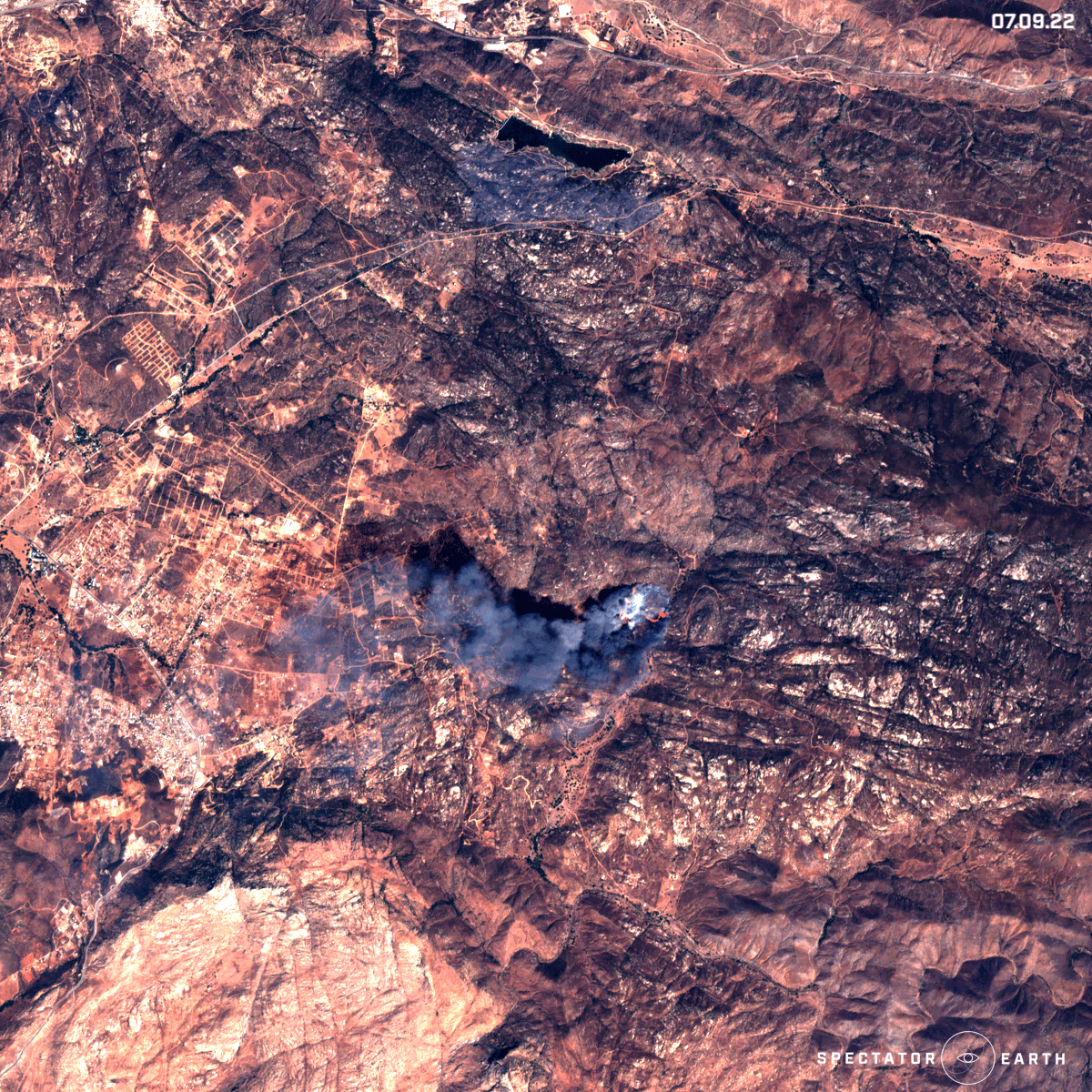
Sentinel-2 image of fire in Tecate – view on the map.
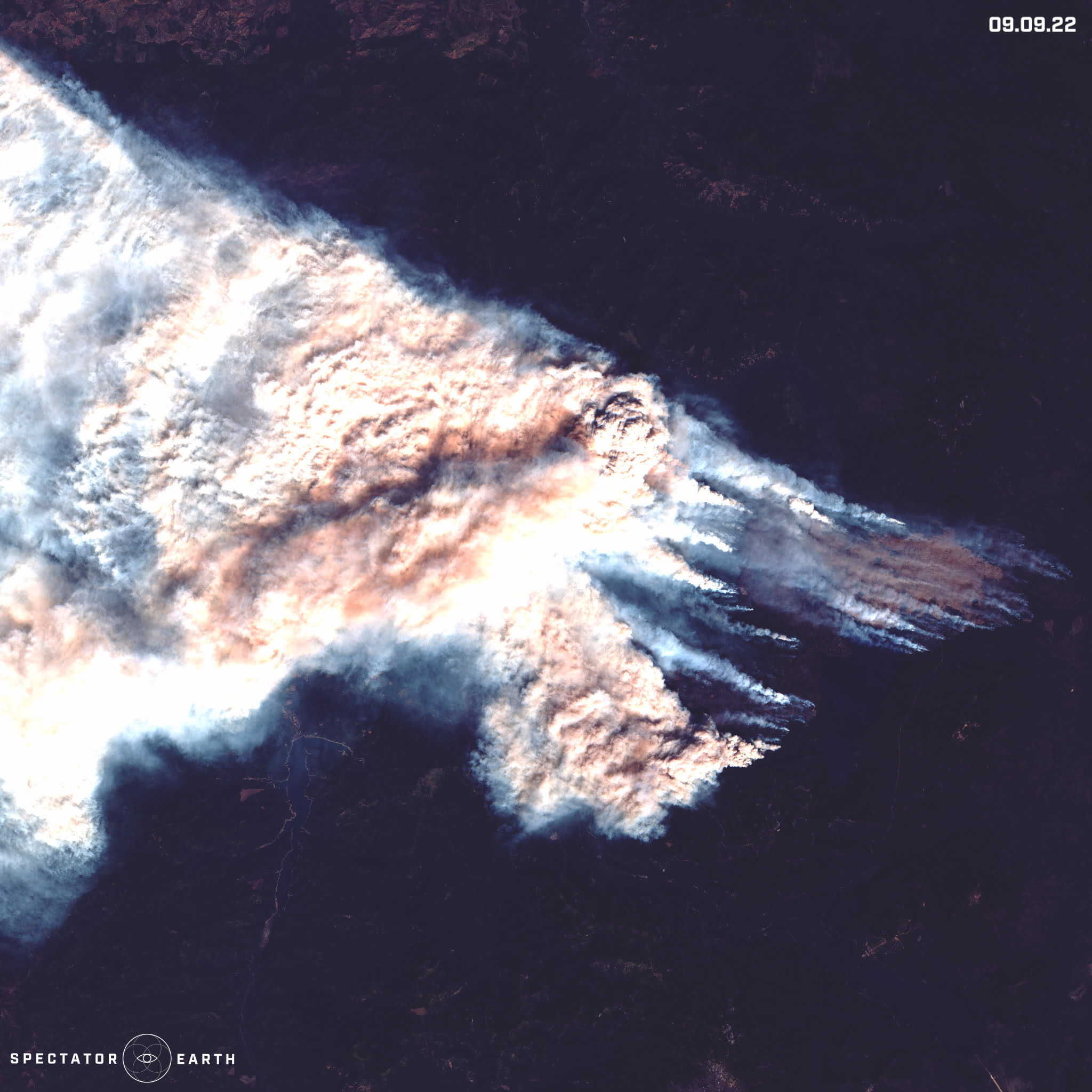
Cedar Creek Fire on the east of Oakridge – view on the map.
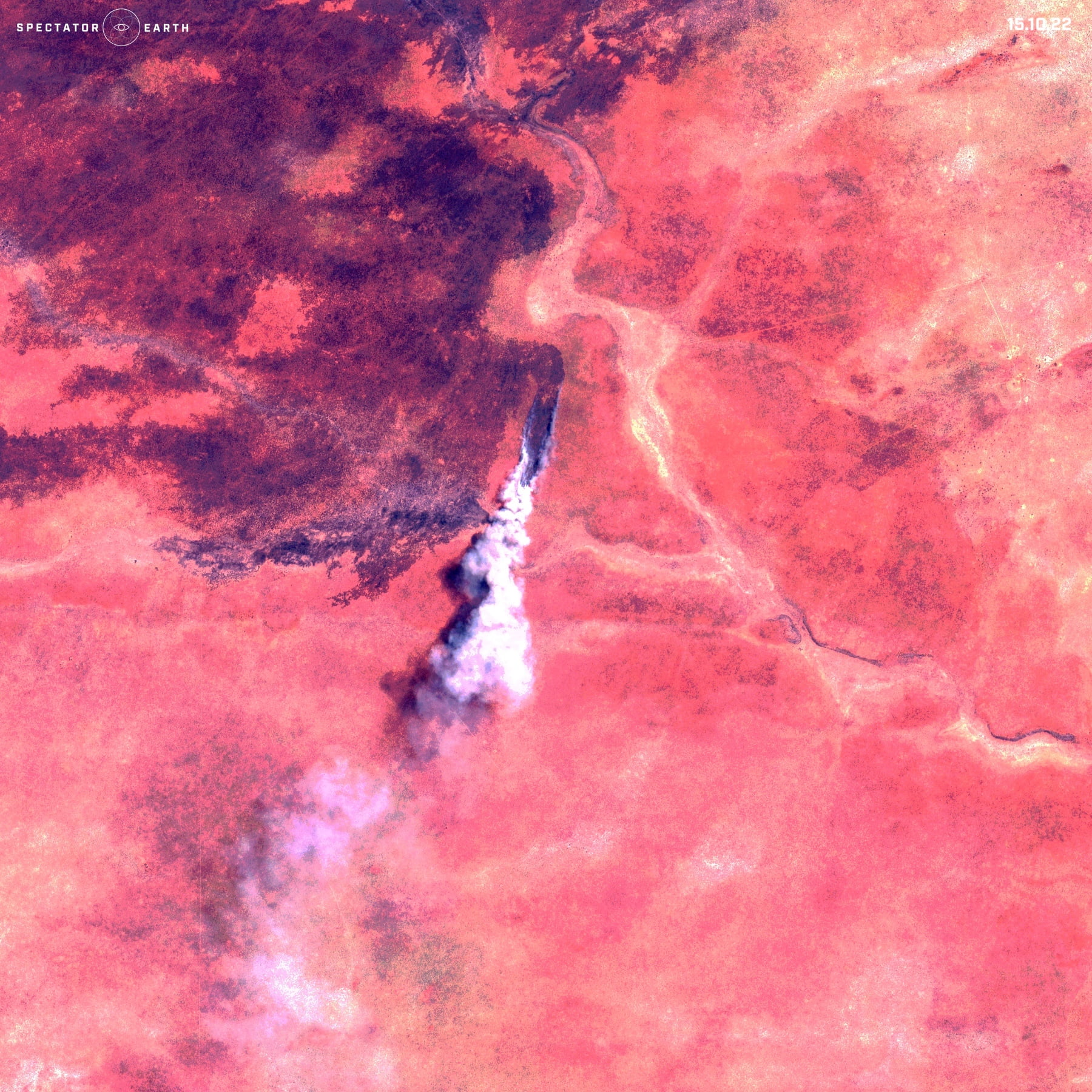
Fire in Namibia near Gam in Otjozondjupa Region – view on the map.
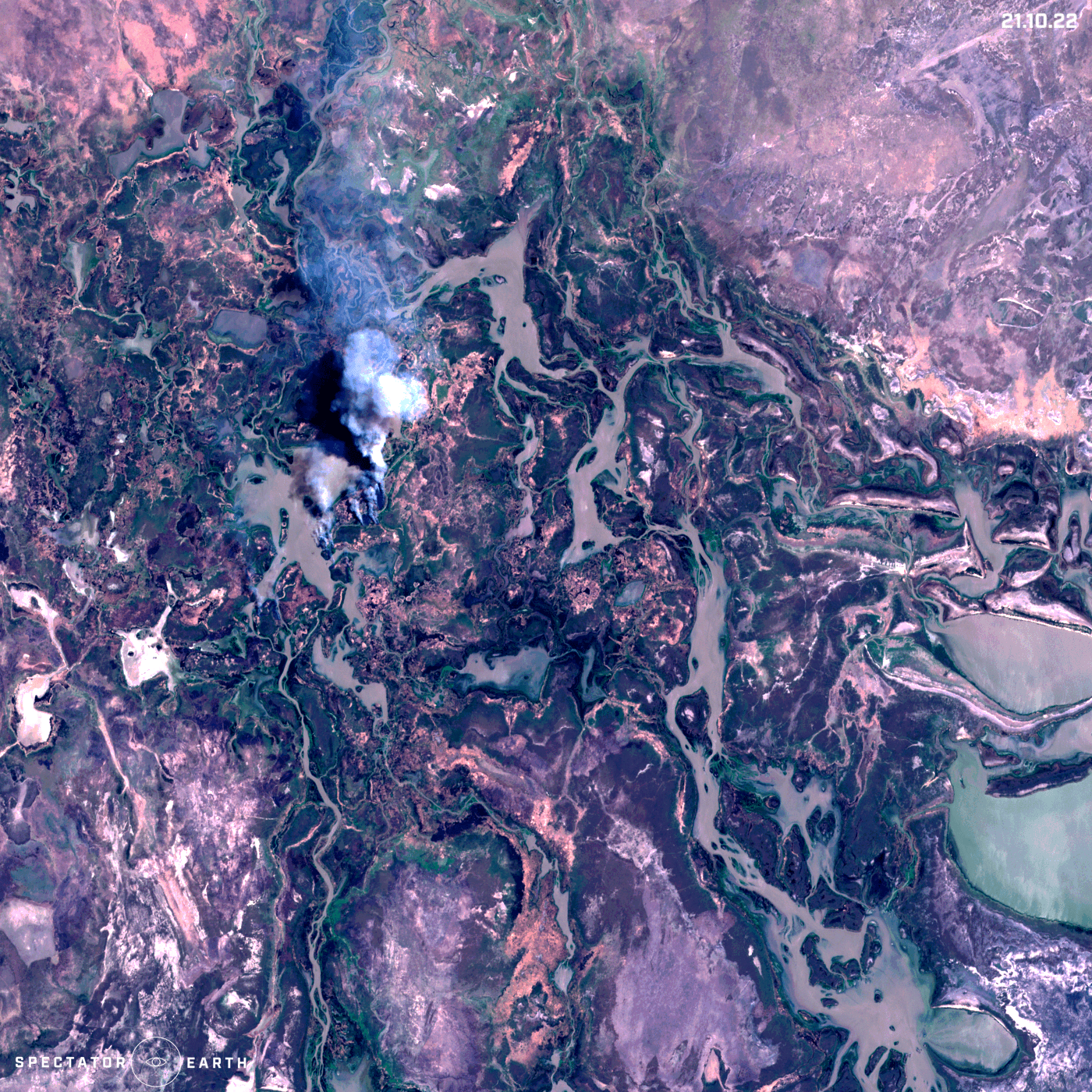
Sentinel-2 image of fire in Rivadavia Department – view on the map
Other effects of the climate change
Melting Glaciers
As far as the effects of climate change are concerned, this time we focused mostly on what was going on near the poles. We can observe melting glaciers, a strong indication of the change that is happening to our planet’s climate. Rapid glacial melts in Antarctica and Greenland are influencing ocean currents, as well as rising sea levels. Over here we have some examples of visible changes in a span of just a few years. First, we have Freemanbreen glacier, which is one of the primary southern outlet glaciers in Svalbard. In the summer of 2022, the glacier experienced likely the most extensive melt in the region in at least the last 50 years (check out summer observations 2022). Another detectable effect of global warming is the melting of the Twitcher Glacier in Antarctica, in just six years. Rapid movement of glacier parts can be observed also in the central part of Antarctica. The latest changes in the Brunt Ice Shelf are signalling that it will probably break off and create an iceberg soon.

Changes of the Freemanbreen glacier in Svalbard – view on the map.
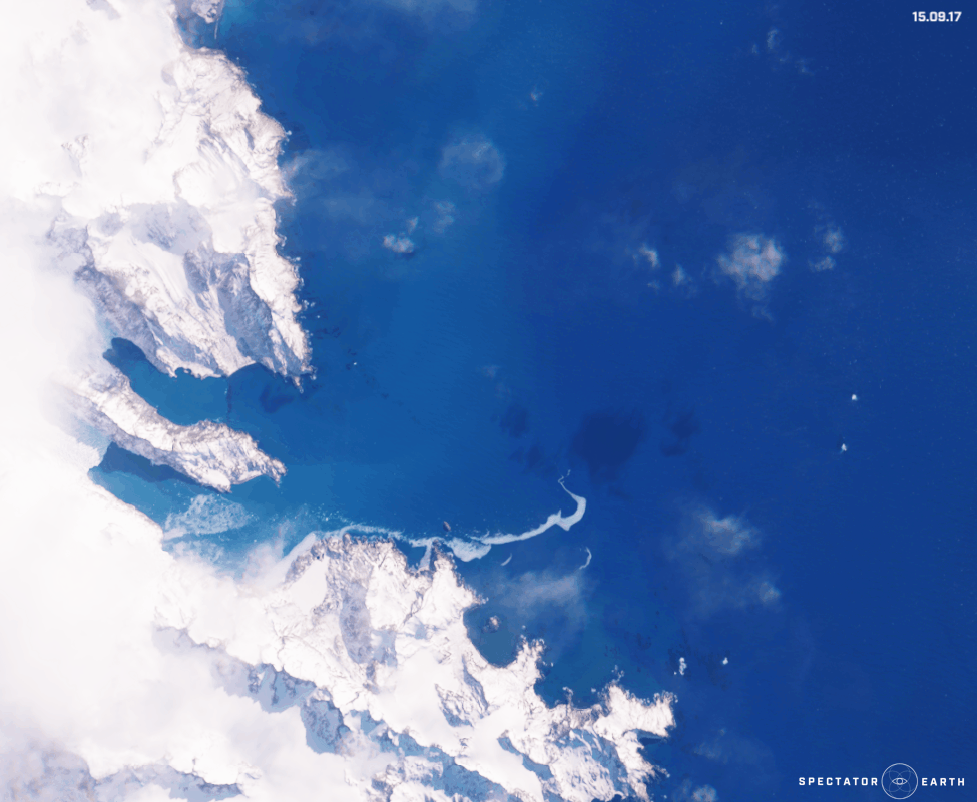
The melting of the Twitcher Glacier over the past 6 years – view on the map.
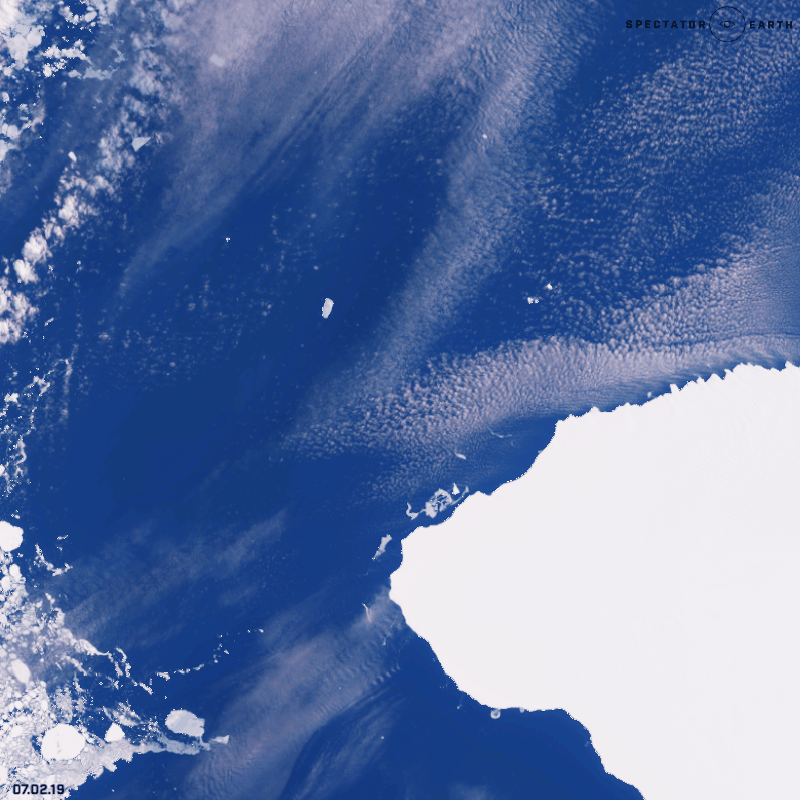
Rapid movement of a part of Brunt Ice Shelf – view on the map.
Hurricanes
However recent changes are not exclusively connected to the poles. The beginning of Autumn was filled with hurricanes and typhoons. One of the most talked about hurricanes was hurricane Ian, which had devastating consequences for the state of Florida. In the presented animation mixed pollutants and waste products along with silt, are visible on the coastline.

The aftermath of Hurricane Ian – view on the map.
Volcanos
Even though volcanic activity isn’t directly related to seasonal changes, statistically volcanos are 18% more likely to erupt during the winter months than at any other time of year (season for volcanic eruptions). However, we can observe most volcanic eruptions no matter the time of the year. A great example of this would be the latest changes in the Nishinoshima volcano – with a certain decrease in activity compared to the latest weeks.
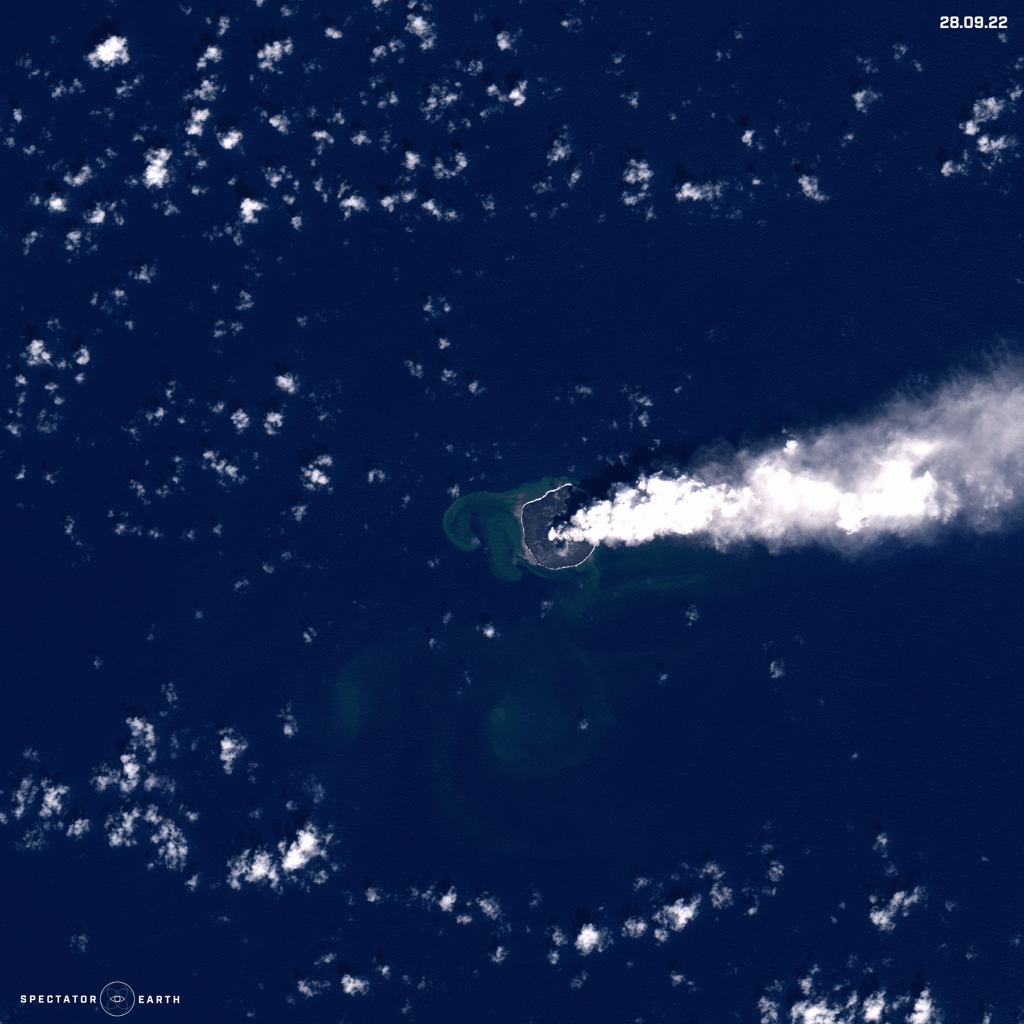
Changes of Nishinoshima volcano in the last few weeks – view on the map.
Open-source intelligence
Satellite imagery enables us to follow situations and events happening all over the world. On September 17 there was an opening ceremony for the Vistula Spit Canal in Poland, which allows bypassing of the Russian Strait of Baltyisk. Below we can see the construction of the Canal which started in February 2019. Moving to more eastern territories through satellite observations we can also monitor real-time events in Crimea. The image below shows Kerch Bridge in Crimea, before the massive explosion resulting in great damage.

Sentinel2 image of Kerch Bridge in Crimea, before the massive explosion – view on the map.
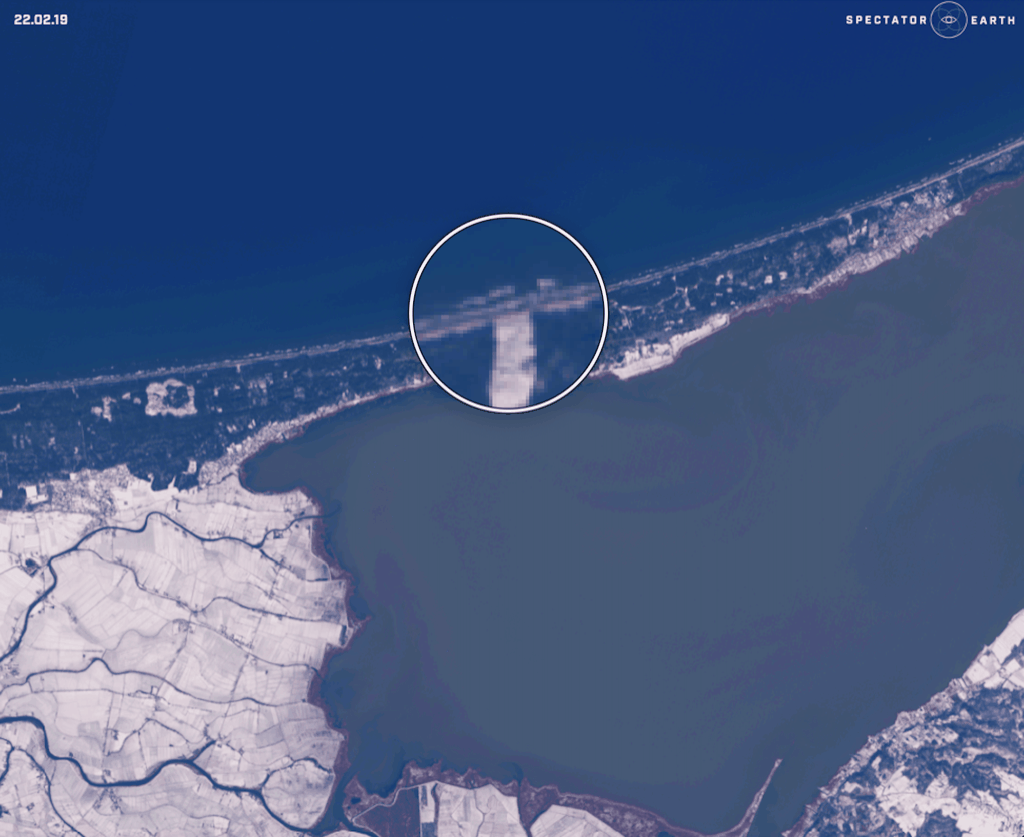
The construction of the Vistula Spit Canal in Poland – view on the map.
Did you like the article? Read more and subscribe to our monthly newsletter!






